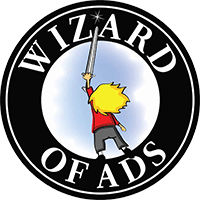full
Pricing, Value, and Salability
Pricing – If you're not worried that you're pricing it too cheap, you're not pricing it cheap enough. That's the best advice I can give you about Pricing in a single sentence.
Never ask, “How much might someone be willing to pay for this?” Ask instead, “At what price could I sell a huge number of these?” Read the biographies of Henry Ford and Sam Walton and you'll learn that this was the one question asked by both men throughout their lives. The correct answer to that question lifted Henry and Sam out of the shadows of obscurity to stand among America's wealthiest citizens.
Please don't listen to well-meaning friends who try to tell you that “Anyone who would pay ten dollars for this would just as quickly pay fifteen.” The Model T was invented when Henry Ford set out to “design a car that could be manufactured and sold at a profit for $850.00” Every other car in the world sold for at least $2,500 at the time. Nearly 2,000 automobile manufacturers had been launched and failed during the 22 years prior to Henry's launch of the Model T in 1908. (It was called the Model T because Models A through S failed to meet Henry's pricing criteria. The Model A that replaced the Model T was the beginning of Henry's second trip through the alphabet.) The assembly line was invented only as a tool to help Henry achieve his price.
Read Made in America, the biography of Sam Walton written while he lay on his deathbed, and you'll quickly see that Sam was just another Henry Ford. Can anyone say Michael Dell?
Value – People don't trade money for things when they value their money more highly than they value the things. No trade will be made unless they want the thing more than they want their money. This is why things-with-stories sell faster than things-without-stories. How much faster depends on the story.
Notice that I didn't say things-with-stories necessarily sell for more money, I said they sell faster. Stories, like refurbishments and repairs, can increase the salability of an item without increasing its actual value. Ask anyone who has ever sold a home or a car. All that repainting, repair and clean-up didn't raise the price as much as it made the home or car more salable. Likewise, stories increase salability more often than they increase the value or the price.
The value of an item – in the mind of a consumer – is simply the difference between the anticipated price and the price on the tag. When the anticipated price is higher than the price tag, it's a “good value.” When the anticipated price is lower than the price tag, it's a bad value. Good stories raise the anticipated price. Finding the untold story is the goal of a process we call the Uncovery.
Salability – The salability of an item can often be improved while the value itself remains unchanged. A good story often increases the salability of an item without increasing its actual value. NOTE: The fact that an item is selling briskly doesn't always mean that you can increase its price. And the fact that an item isn't selling well can't always be cured by lowering its price.
Sometimes the secret to increasing the sales volume of an item is to tell a better story about it. Sometimes the secret is simply to lower the price. Do both and you can take over the world.
Just ask Henry, Sam and Michael.
Roy H. Williams

